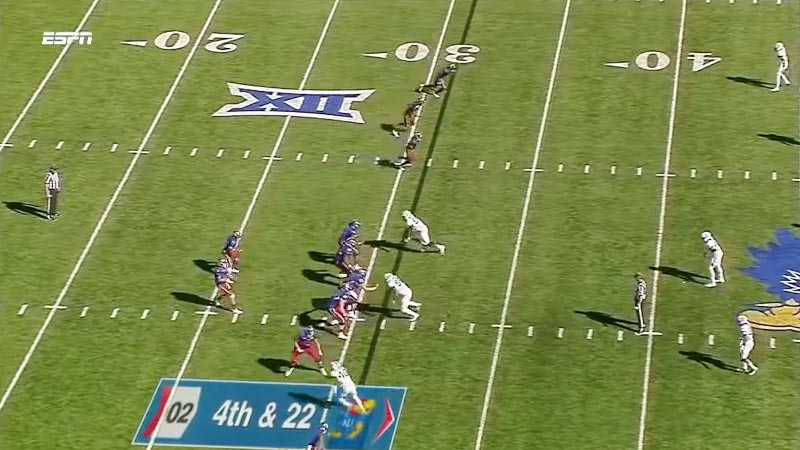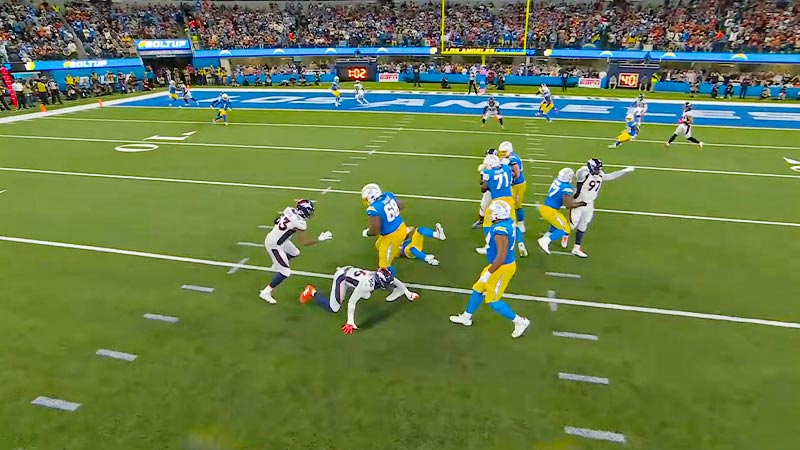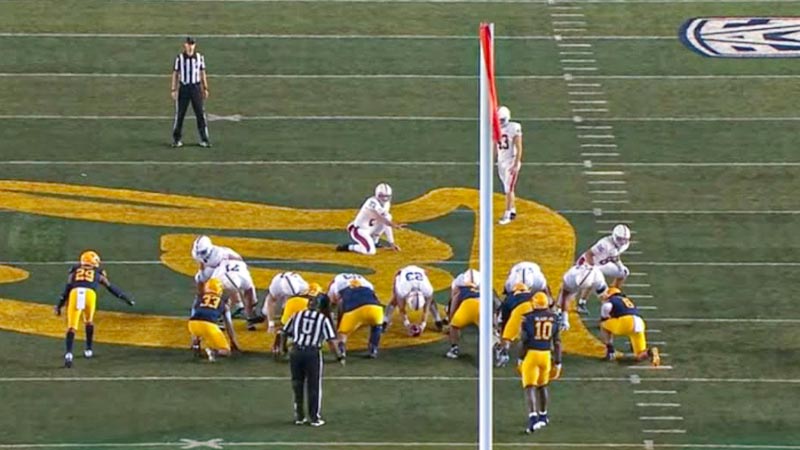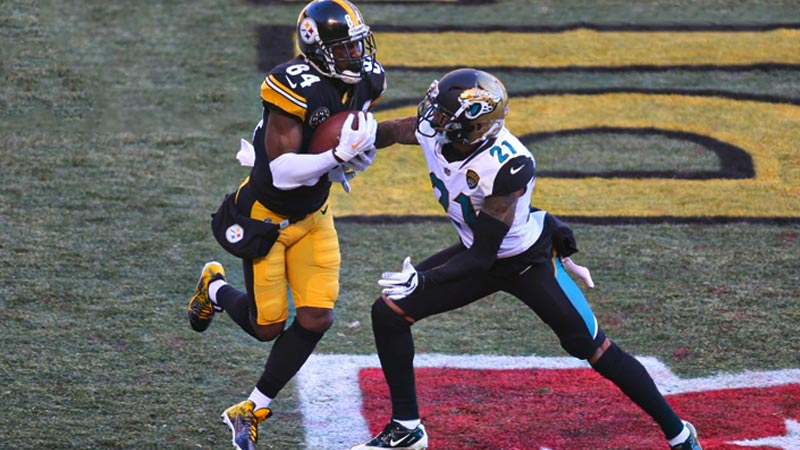In the realm of American football, few moments hold as much strategic weight as the 4th Down. This term marks the fourth and final attempt a team gets to gain 10 yards.
The outcome can shape the game’s trajectory, making it a paramount decision point. This blog post delves into the complexities of Football’s 4th Down, exploring its significance, the choices it presents, and the profound impact it wields on the ebb and flow of a match.
As players and coaches stand on the precipice of choice, the suspense and tactics woven into this moment epitomize the captivating drama that fuels the sport we cherish.
What is Football 4th Down?
Football 4th Down is a pivotal moment in American football, occurring when the offensive team has exhausted three attempts to advance 10 yards.
On the fourth down, they face a critical decision: either attempt to gain the necessary yardage or relinquish possession to the opposing team. Teams can opt to “Go For It,” launching a standard offensive play to reach the 10-yard mark and maintain possession.
Alternatively, they might punt the ball, strategically kicking it deep to pin the opposing team far from their end zone. Another option is to attempt a field goal if within range, aiming to score three points.
The decision on 4th Down is a strategic balance between taking risks to extend possession or strategically positioning the opponent through punting or field goal attempts.
Options in Football 4th Down

In football, when a team reaches the 4th Down and hasn’t gained the necessary yardage for a first down, they have a few options to consider:
Go For It
The offensive team can choose to run a regular play in an attempt to gain the required yardage. This is a bold decision to maintain possession but comes with the risk of turning over the ball to the opposing team if unsuccessful.
Punt
If the offensive team is deep in their own territory and unlikely to make the required yardage, they might choose to punt the ball. This decision aims to change the field position, making it harder for the opposing team to score.
Field Goal Attempt
If the offensive team is close enough to the opponent’s end zone, they might decide to attempt a field goal, which can earn them three points. This option is chosen when the team is confident in their kicker’s ability to make the kick.
Fake Punt or Field Goal
As a surprise tactic, the team might opt for a fake punt or field goal, attempting to catch the opponent off guard and gain the necessary yardage. This is a high-risk, high-reward option.
The decision on 4th Down is a critical strategic choice that can significantly impact the flow and outcome of the game. Teams must weigh their options based on the score, time remaining, field position, and their own capabilities.
Strategical Approach of 4th Down

The strategic approach to 4th Down in football is a complex decision that involves considering various factors to maximize a team’s chances of success and control the game’s momentum.
Coaches must carefully analyze the situation before making a choice:
Field Position
The location of the ball on the field is crucial. If a team is close to the opponent’s end zone, attempting a field goal might be a viable option. If deep in their own territory, punting could help improve field position.
Score and Time
The score and time remaining in the game influence the decision. If a team is trailing by a significant margin and time is running out, they might be more inclined to take risks and go for it.
In a close game, the decision might be more conservative to avoid giving the opponent an advantageous position.
Offensive Performance
The team’s offensive capabilities play a role. If the offense has been consistently successful in gaining short yardage, they might be more likely to go for it on 4th Down.
Defensive Matchup
Consideration of the opponent’s defensive strength is crucial. If the opponent’s defense is strong, the offensive team might be more inclined to take a risk and go for it to keep the momentum.
Game Situation
Factors like the quarter of the game, timeouts remaining, and potential weather conditions impact the decision. Late in the game, with fewer timeouts, teams might opt for riskier plays to keep possession.
Coaching Philosophy
Each coach has their own philosophy. Some coaches are more aggressive and willing to take risks, while others might prioritize field positions and opt to punt.
Personnel
The players on the field influence the decision. If a team has a strong running back or a reliable kicker, it could sway the choice.
Opponent Analysis
Analyzing the opponent’s tendencies on 4th Downplays can inform the decision. If the opponent’s defense struggles with specific types of plays, the offensive team might exploit those weaknesses.
Probability and Analytics
Advanced statistical analysis can help coaches make data-driven decisions. There are models that consider historical data and success rates for various 4th Down scenarios.
Ultimately, the strategic approach to 4th Down involves a delicate balance between taking calculated risks and making choices that align with the team’s strengths, the game situation, and the overall objective of winning.
It’s a decision that can define the outcome of a game and requires a combination of knowledge, intuition, and strategic thinking.
Field Goal Football 4th Down

On 4th Down in football, when a team is within field goal range and the distance to the end zone is too far to reasonably attempt a first down conversion, they might choose to attempt a field goal.
A field goal is a scoring play where the kicker attempts to kick the ball through the opposing team’s goalposts. Here’s how the field goal attempt works:
Setup
The offensive team brings out the field goal unit onto the field. The field goal unit typically includes the kicker, holder, and long snapper.
Placement
The ball is snapped to the holder, who places it on the ground at the spot where the field goal attempt will be made. The kicker lines up behind the holder.
Kicking
The kicker approaches the ball and attempts to kick it over the crossbar and between the uprights of the goalposts. The height and distance of the kick determine whether the field goal is successful.
Scoring
If the kicked ball successfully goes over the crossbar and between the uprights, the field goal is good, and the team is awarded three points on the scoreboard.
Missed Attempt
If the kicked ball goes wide of the uprights, hits the uprights, or falls short, the field goal attempt is unsuccessful. The opposing team takes possession of the ball at the spot where the kick was attempted (unless it was a fair catch kick).
The decision to attempt a field goal on 4th Down depends on the distance to the goalposts, the kicker’s accuracy and range, the score of the game, and the time remaining.
Teams with a reliable kicker and the opportunity to secure points might choose to attempt a field goal to get on the scoreboard or extend their lead.
Impact of Football 4th Down
The impact of 4th Down decisions in football is significant and can heavily influence the outcome of a game. Coaches’ choices on 4th Downplay a crucial role in shaping the momentum, field position, and ultimately the score of the game.
Here are some ways in which 4th Down decisions can impact the game:
Field Position
The decision to go for it, punt, or attempt a field goal on 4th Down can greatly affect field position. Punting from deep in one’s own territory can pin the opponent further back, making it harder for them to score.
Conversely, attempting a long field goal and missing might give the opposing team a better starting field position.
Momentum
Successfully converting on 4th Down can provide a significant boost in momentum for the offensive team. It energizes the players and fans, potentially leading to more successful plays.
Conversely, failing to convert can deflate momentum and give the opponent a surge of confidence.
Scoring Opportunities
A successful 4th Down conversion can lead to continued possession and potential scoring opportunities. It can keep drives alive and allow a team to advance down the field, increasing their chances of putting points on the board.
Time Management
Depending on the decision made on 4th Down, the clock management can be affected. If a team chooses to go for it and fails, the opposing team gains possession with potentially better field position and more time left on the clock.
Pressure and Psychological Impact
Coaches’ decisions on 4th Down can impact the psychological aspects of the game. Aggressive decisions can put pressure on the opposing defense, while conservative choices might signal caution and potentially affect their confidence.
Late-Game Situations
In close games or situations where a team is trailing, 4th Down decisions become even more critical. Coaches need to assess the risk-reward balance carefully, as late-game 4th Downplays can make or break a comeback attempt.
Fans and Media Perception
Coaches’ decisions on 4th Down are often scrutinized by fans and the media. Depending on the outcome, these choices can lead to praise or criticism and can influence the perception of coaching effectiveness.
Game Strategy
The outcome of 4th Down decisions can alter the overall game strategy. A successful 4th Down conversion might lead to more aggressive play-calling, while failed conversions could make coaches more cautious.
In essence, the impact of 4th Down decisions is multifaceted and extends beyond the immediate play.
Coaches must carefully consider the game situation, team strengths, and opponent tendencies when making these critical choices, as they can have a lasting impact on the game’s progression and final result.
FAQs
What is 4th Down in Football?
The term “4th Down” refers to the fourth and final attempt a team has to advance 10 yards toward the opponent’s end zone. If successful, the team earns a fresh set of downs. If not, possession of the ball is handed over to the opposing team.
What are the Options on 4th Down?
Teams facing a 4th Down have several options, including attempting to gain the necessary yardage, punting the ball to change field position, attempting a field goal for three points, or even executing surprise plays like fake punts or field goals.
How do Coaches Decide on 4th Down Plays?
Coaches base their decisions on a combination of factors, such as field position, score, time remaining, offensive and defensive capabilities, and their overall game strategy. Analyzing these variables helps them make calculated choices.
How does 4th Down Impact Momentum?
The outcome of 4th Downplays significantly impacts the momentum of a game. Successful conversions energize teams, while failures can deflate spirits. The choice made and its result can dictate the course of events and emotional dynamics on the field.
What Role Do Analytics Play in 4th Down Decisions?
Advanced statistical models and analytics have begun to influence 4th Down decisions. Coaches can now access data-driven insights into historical success rates for different scenarios, aiding them in making more informed choices.
Wrapping Up
Football’s 4th Down encapsulates the essence of strategic decision-making in the midst of fierce competition. The choices made during this pivotal moment can alter field position, ignite momentum shifts, and even shape the narrative of the game.
From heart-pounding attempts to gain yardage to the tactical chess match played out by coaches, 4th Down embodies the intricate balance between risk and reward that defines the sport.
As fans, we remain captivated by the suspenseful uncertainty that hangs in the balance, ever mindful of the profound impact this single play can wield on the destiny of teams vying for victory.
Thank you for your time.







